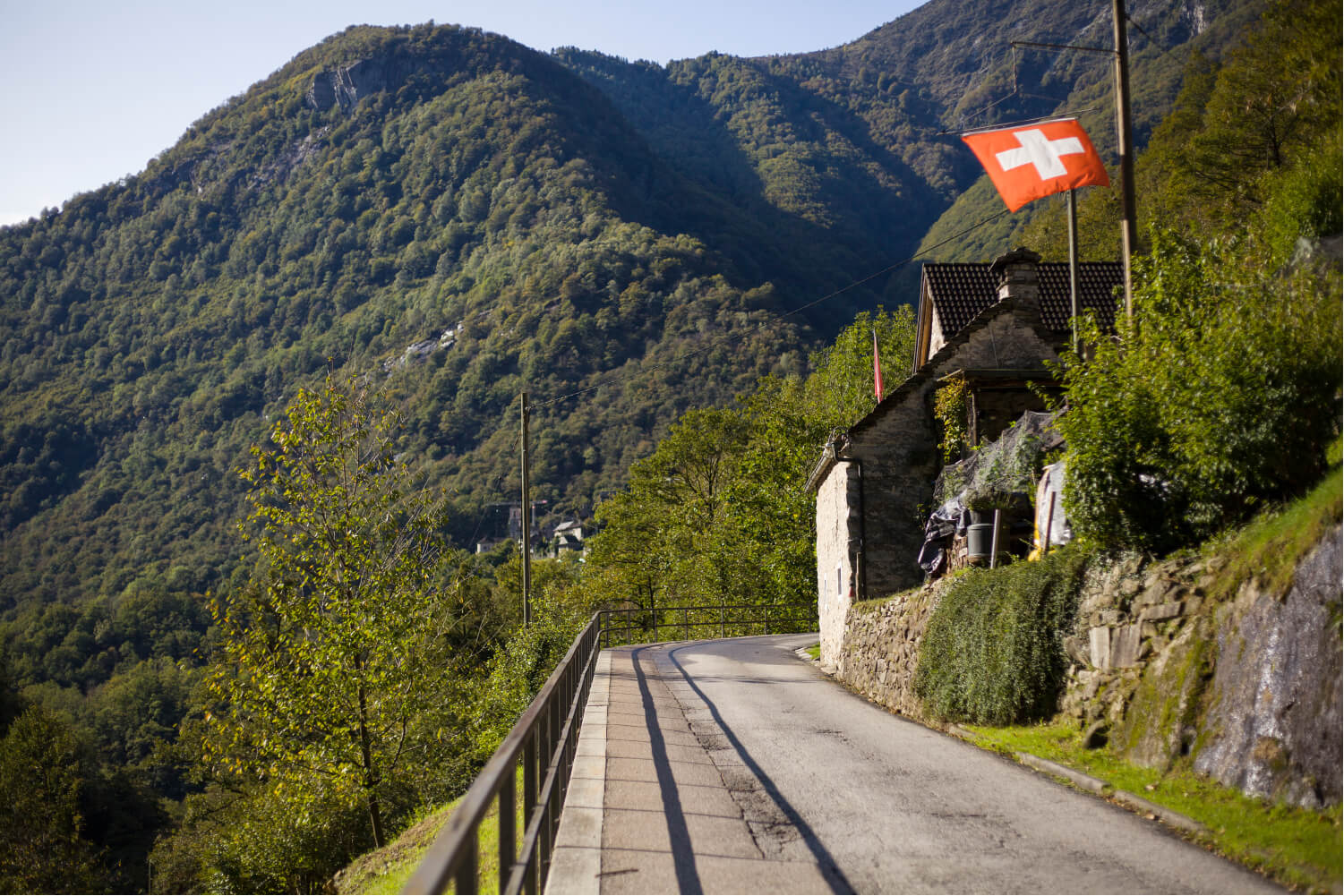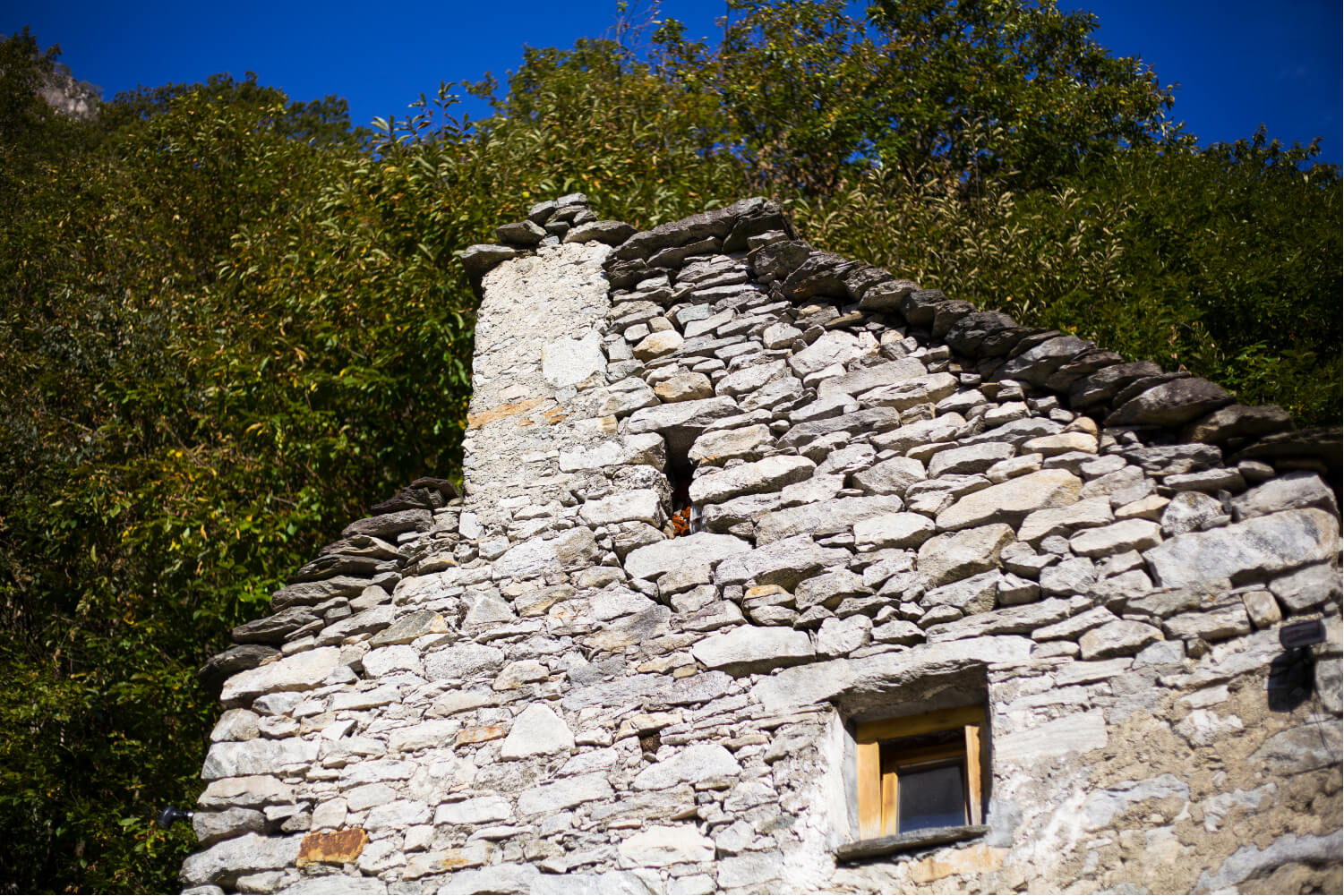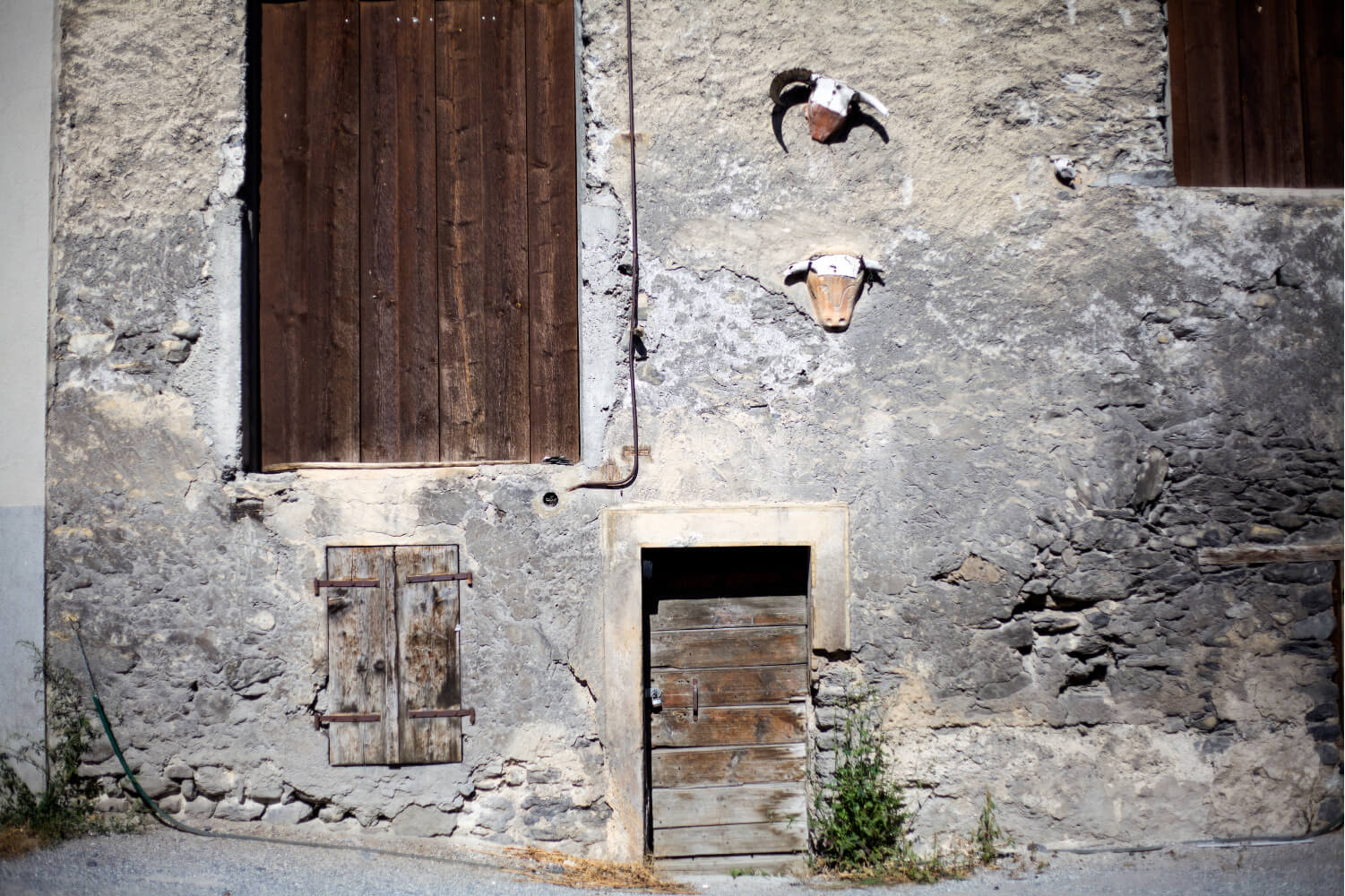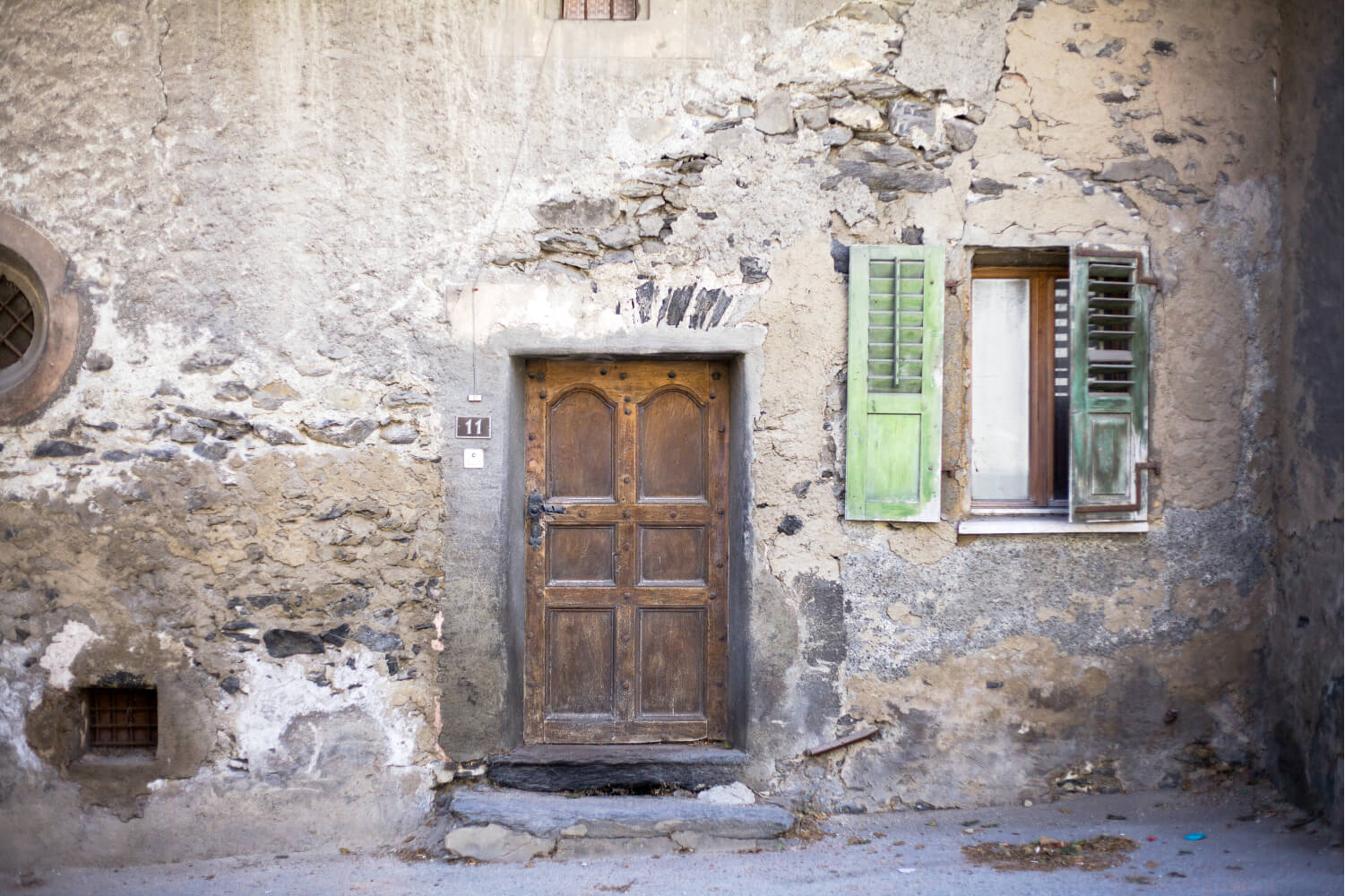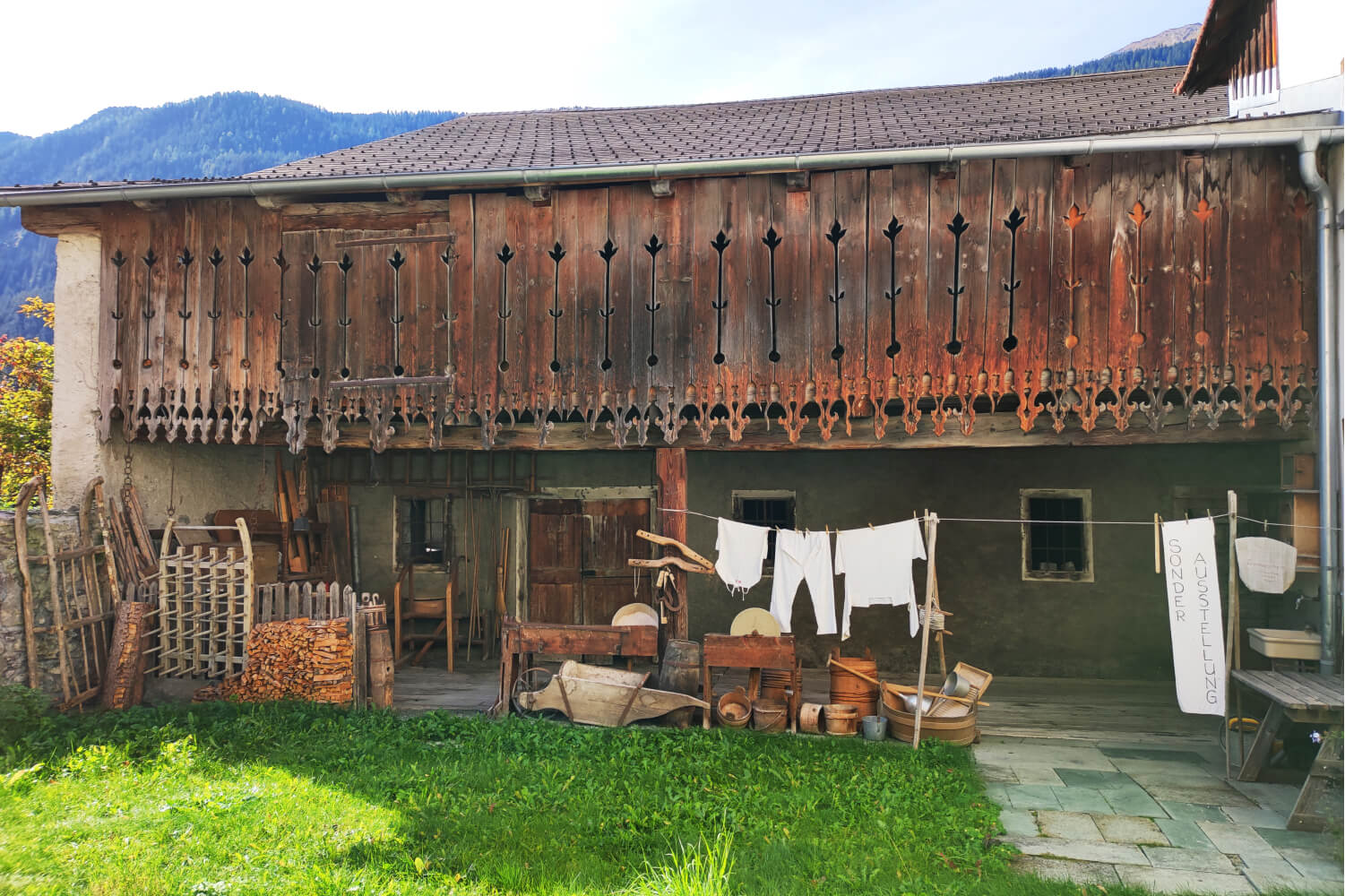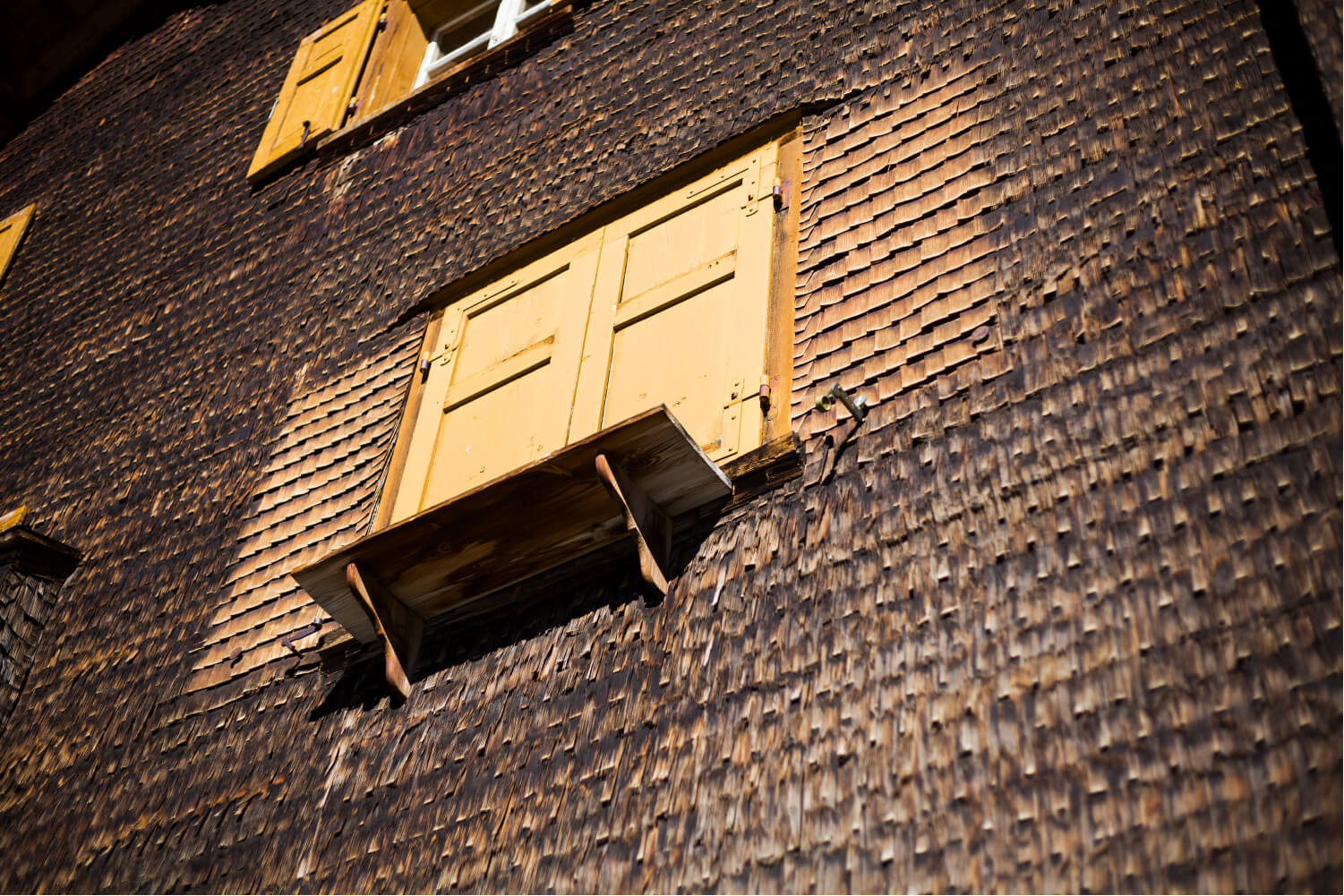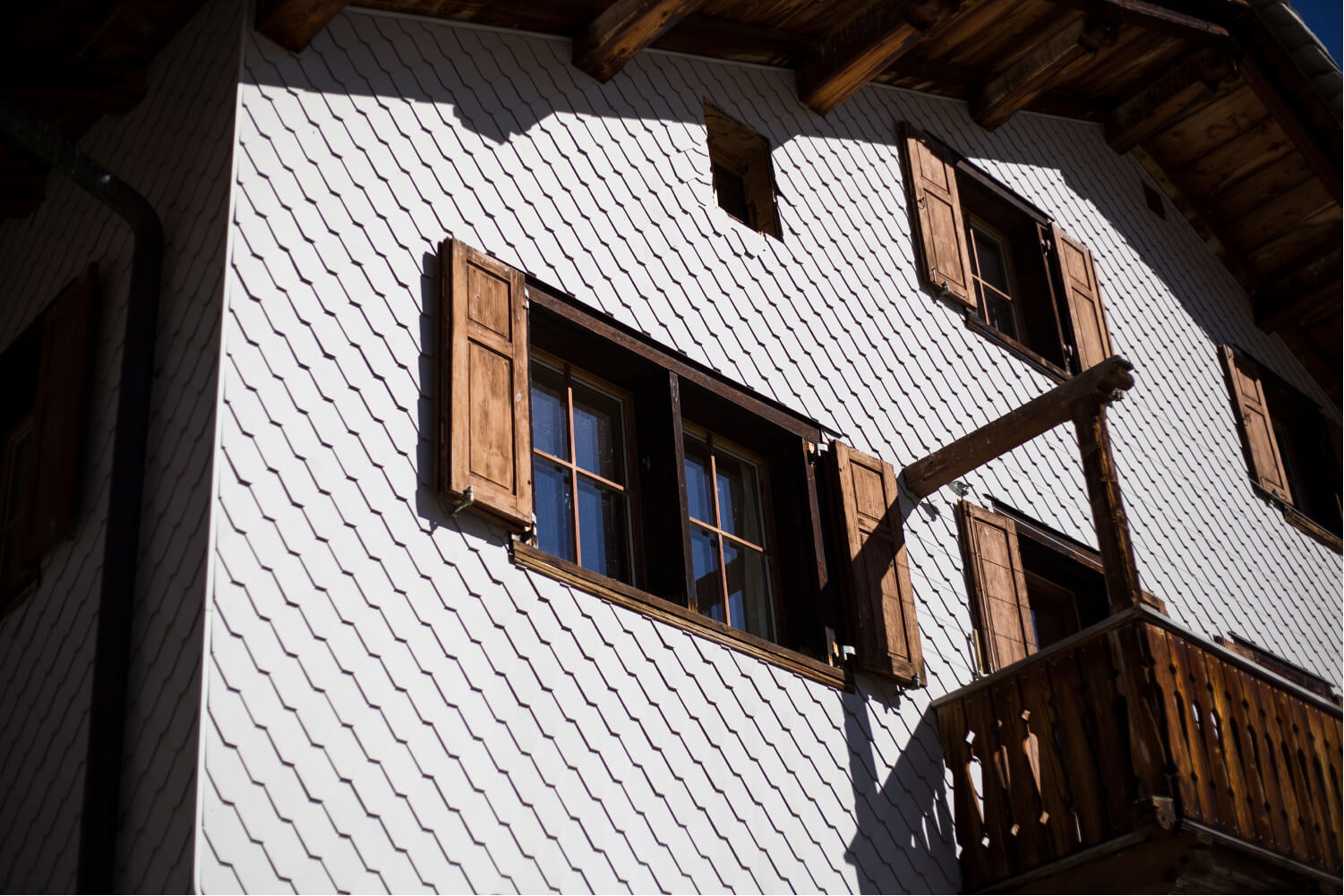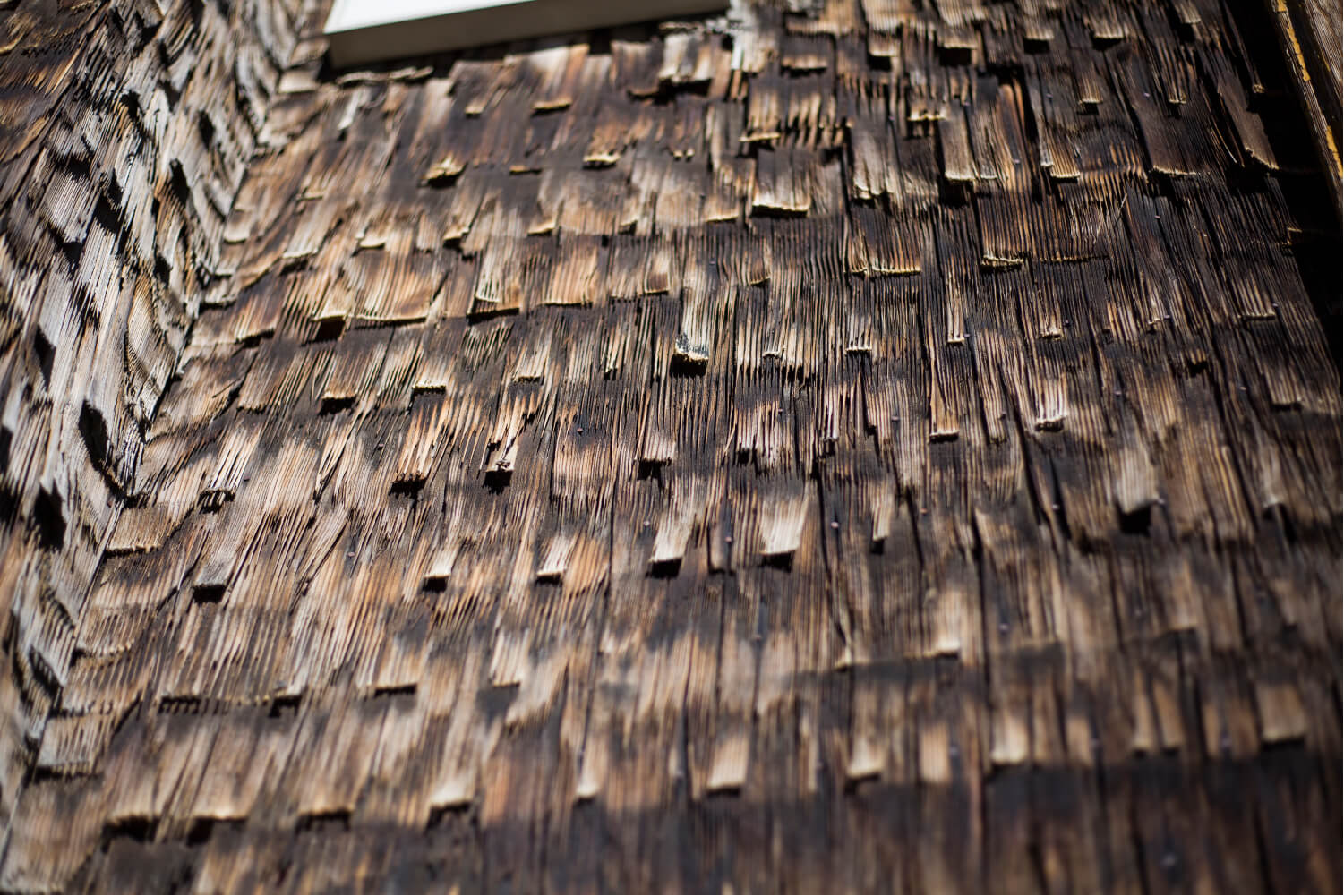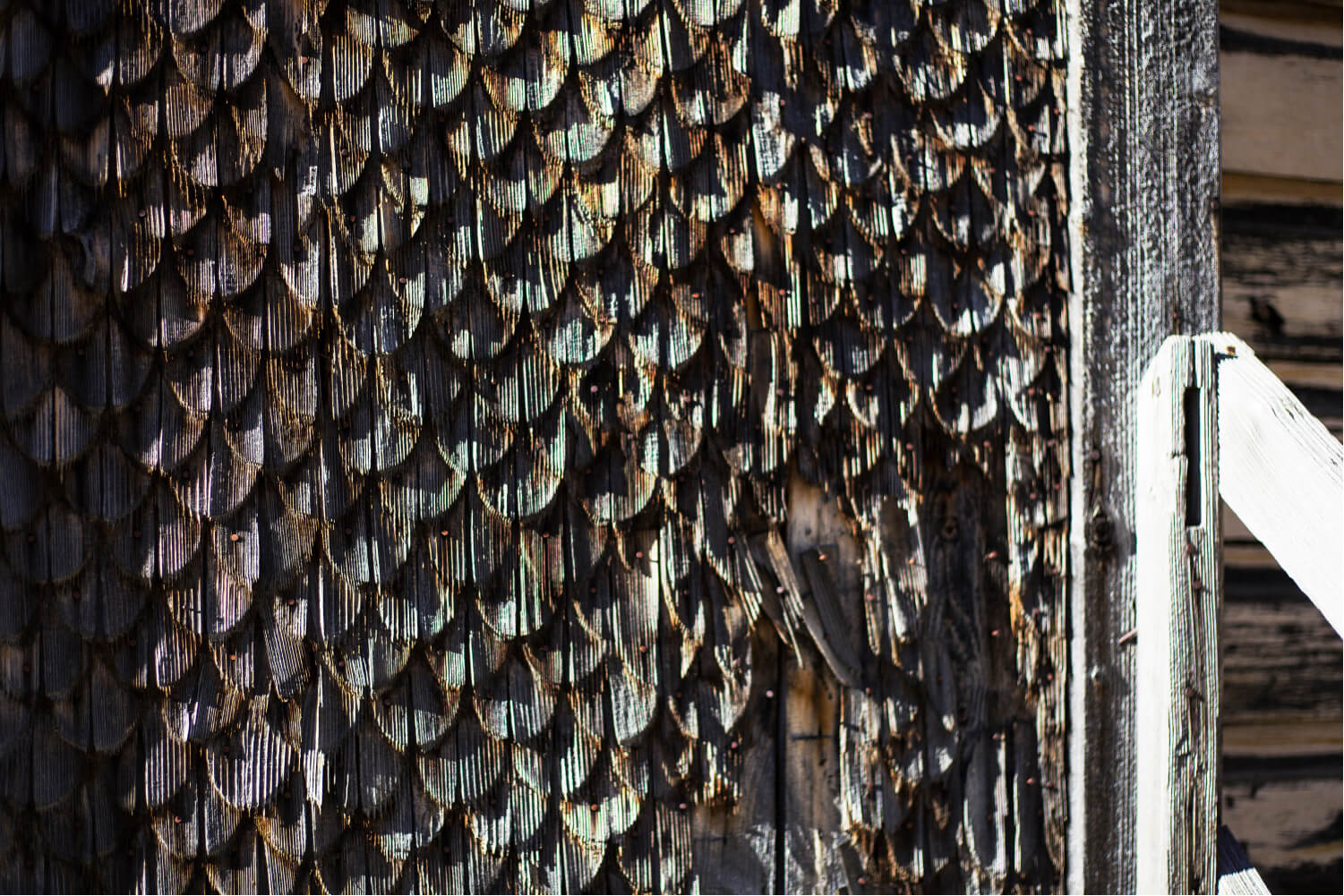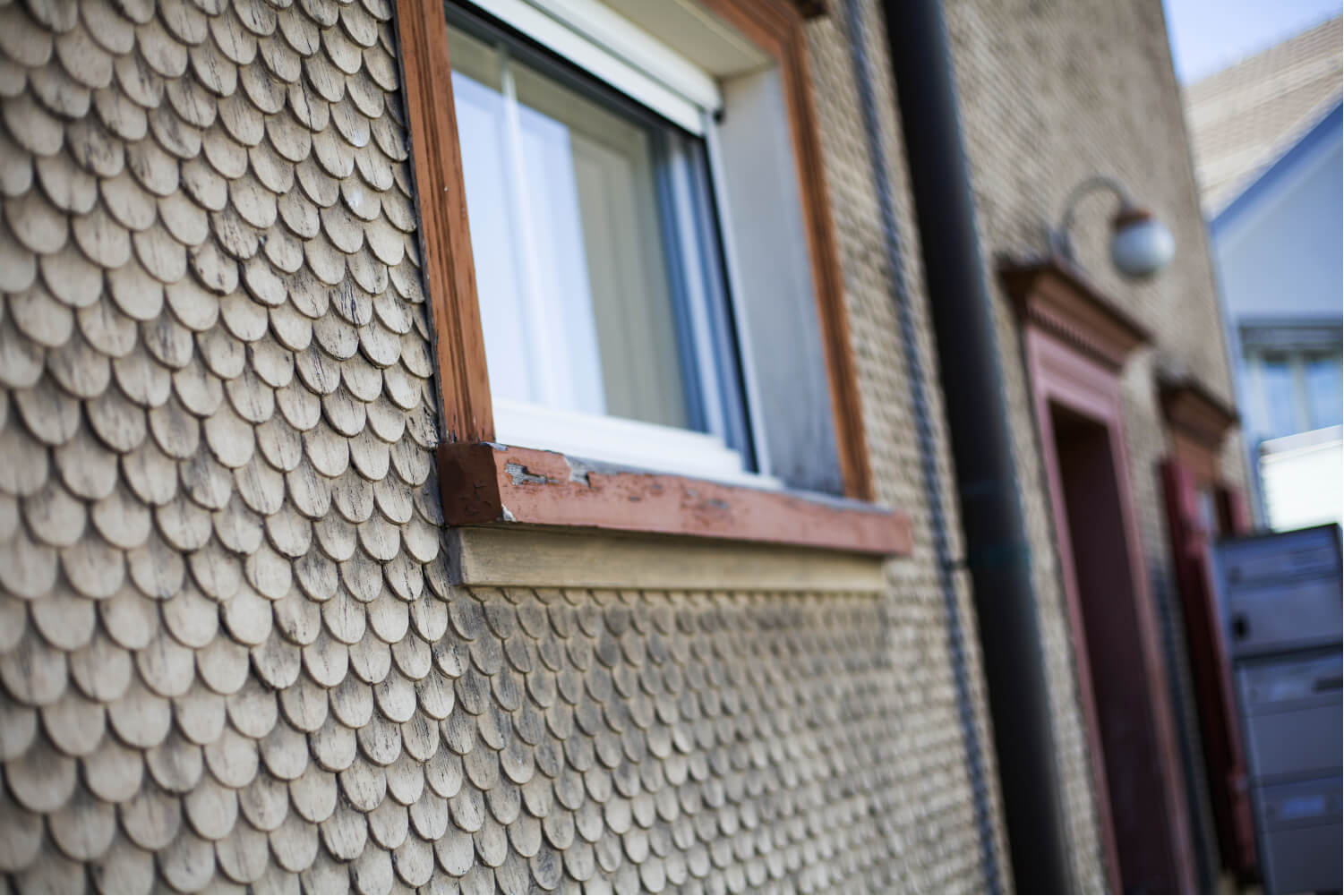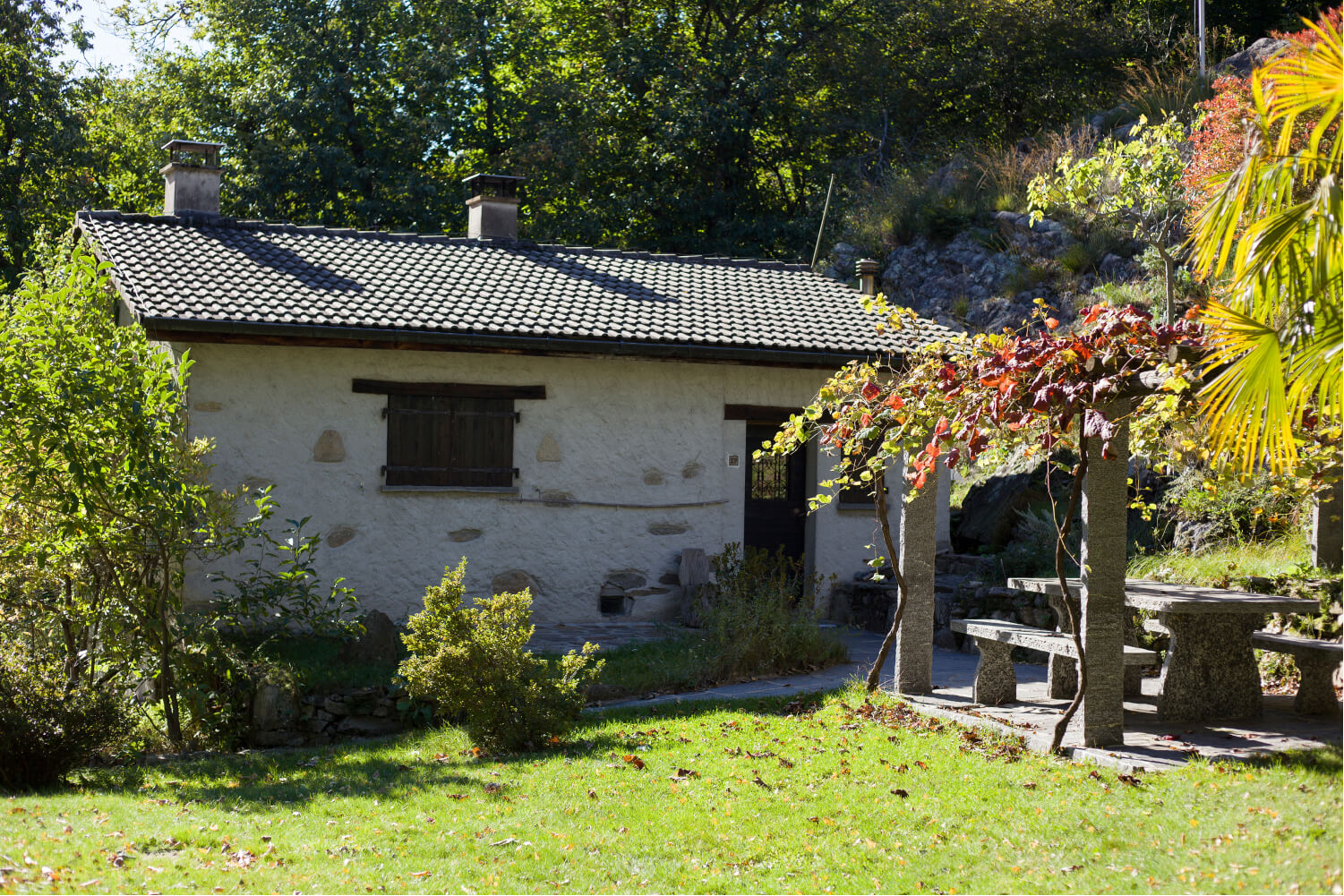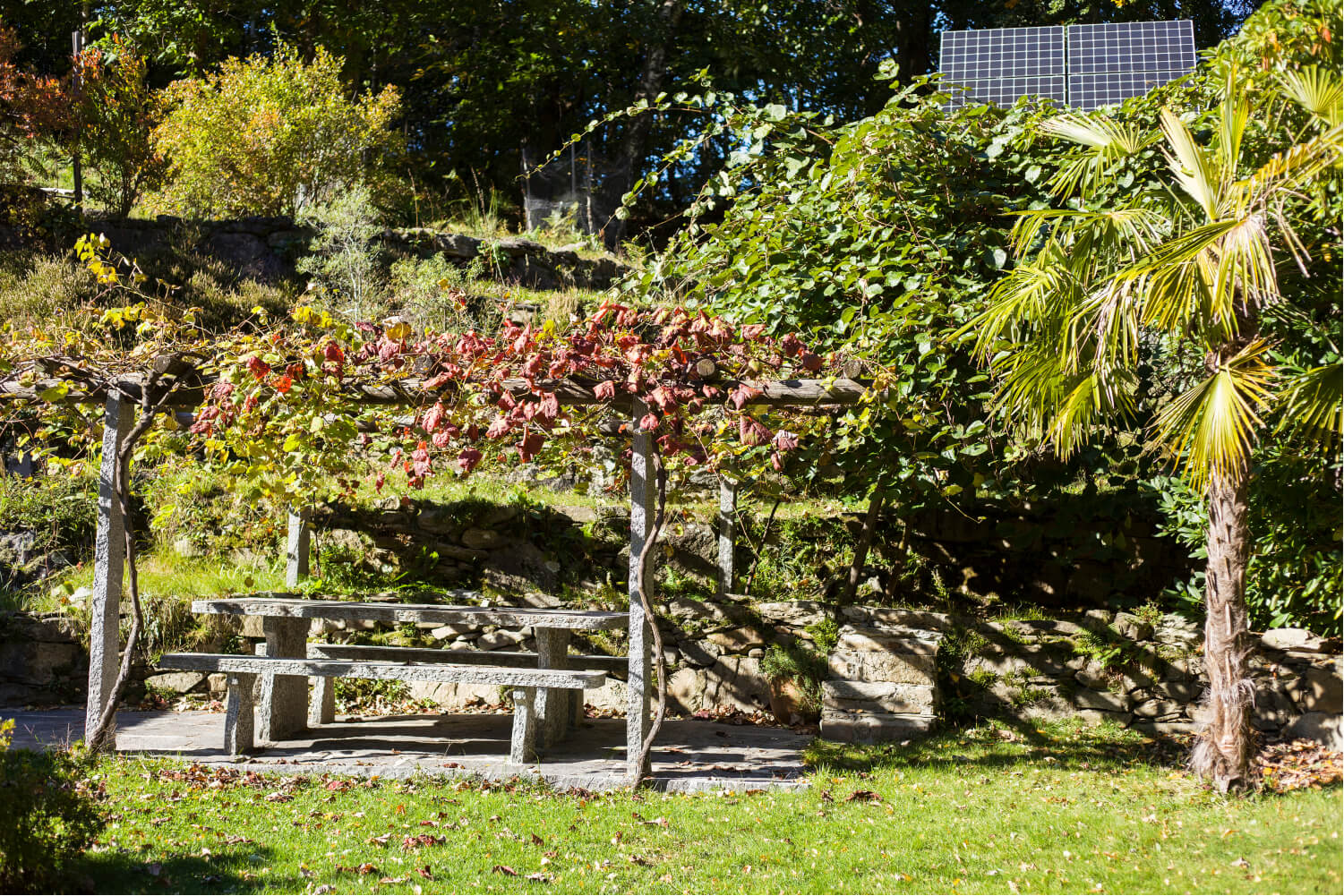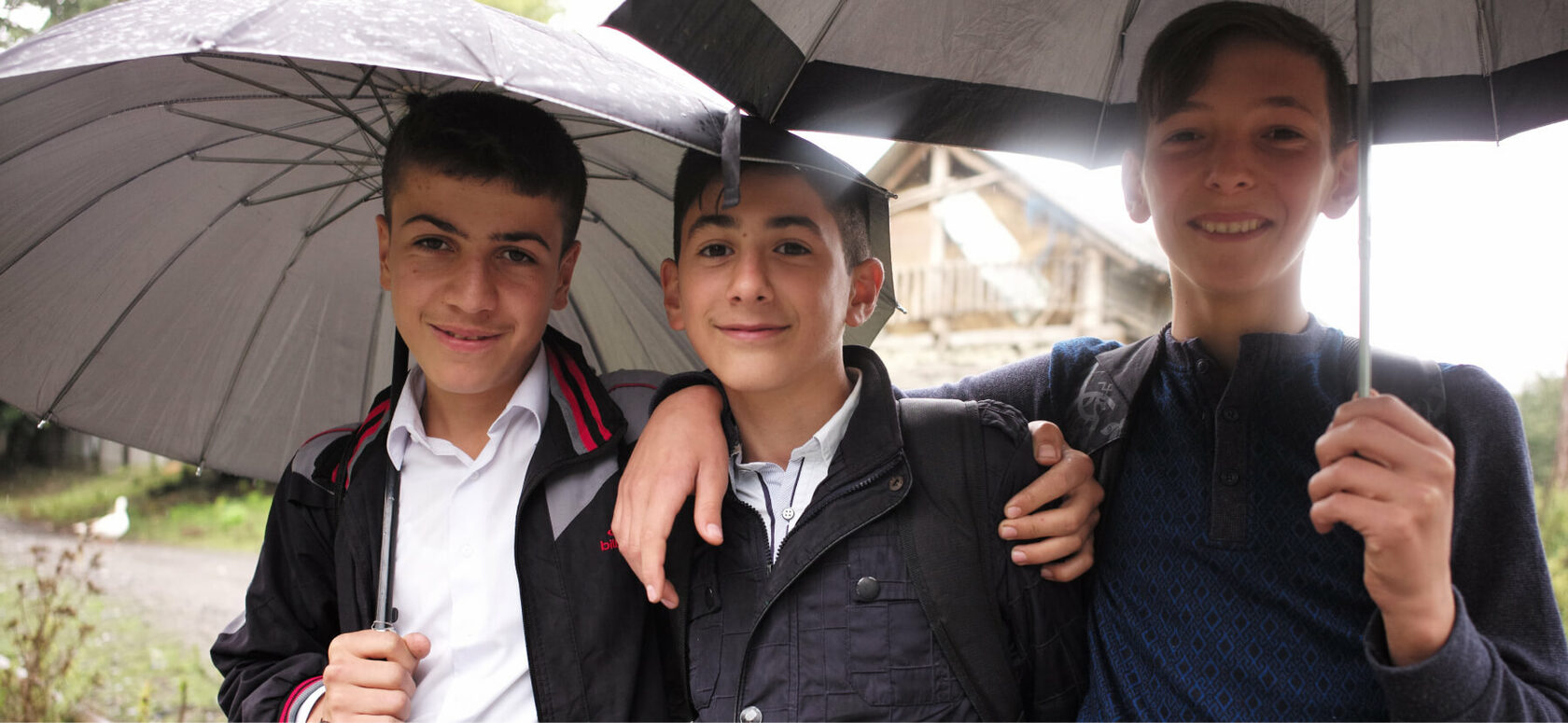

1/2
Sonogno, Canton of Ticino, Switzerland, 2021.
HIGHLANDERS. THE CAUCASUS & THE ALPS
Chapter III: Architecture


1/2
Qabala, Azerbaijan, 2016.
HIGHLANDERS. THE CAUCASUS & THE ALPS
Chapter III: Architecture
MATERIALS AND CONSTRUCTION
The specifics of architecture in the mountainous regions of the Caucasus and Switzerland were and still are largely determined by the available local building materials, the landscape and, of course, personal taste. If the old houses in these regions are functionally and aesthetically similar, the paths in modern construction in Switzerland and the Caucasus have diverged.
MATERIALS AND CONSTRUCTION
The specifics of architecture in the mountainous regions of the Caucasus and Switzerland were and still are largely determined by the available local building materials, the landscape and, of course, personal taste. If the old houses in these regions are functionally and aesthetically similar, the paths in modern construction in Switzerland and the Caucasus have diverged.

Elvina Ryazanova
Art Historian, Social anthropologist, Candidate of Historical Sciences, Junior Research Scientist of the N. N. Miklukho-Maklay Institute of Ethnology and Anthropology of the Russian Academy of Sciences
Depending on the region, there are different architectural styles in Switzerland.
Depending on the region, there are different architectural styles in Switzerland.
THE ALPS
THE ALPS
Villages in the valleys
Houses in the mountains
The hamlets are marked by a folk style: large farmhouses built in stone or wood. In areas where wood was not available, stone was used instead.
In the mountains, houses were built with small windows to protect them from strong winds and snow, while on the plateau they were built with large windows. In northeastern and eastern Switzerland, the timbered style borrowed from Germany has spread. In the foothills of the Alps there are very simple square stone buildings.
Villages in the valleys
The hamlets are marked by a folk style: large farmhouses built in stone or wood. In areas where wood was not available, stone was used instead.
Houses in the mountains
In the mountains, houses were built with small windows to protect them from strong winds and snow, while on the plateau they were built with large windows. In northeastern and eastern Switzerland, the timbered style borrowed from Germany has spread. In the foothills of the Alps there are very simple square stone buildings.
Saviese, Canton of Valais, Switzerland, 2021.


Saviese, Canton of Valais, Switzerland, 2021.
THE CAUCASUS
The architecture of mountainous Dagestan has individual features characteristic of the people who live there.
THE CAUCASUS
The architecture of mountainous Dagestan has individual features characteristic of the people who live there.
Lezgian villages
Upper foothills
In the zone of the lower foothills, in the Lezgian villages, where there were no stones and no wood, the houses were built of mudbricks — raw bricks of clay with the addition of straw. The buildings of this zone are characterized by many balconies and galleries, with simple decoration limited to the intersection of the brackets of cornices and beams.
In the area of the upper foothills, where there is a lot of building stone and different types of trees grow, houses were constructed in a completely different style. Residential buildings are massive, built of stone or wood, window and door openings are wide. The fronts are usually decorated with ornamental carvings in a traditional wicker pattern.
Lezgian villages
In the zone of the lower foothills, in the Lezgian villages, where there were no stones and no wood, the houses were built of mudbricks — raw bricks of clay with the addition of straw. The buildings of this zone are characterized by many balconies and galleries, with simple decoration limited to the intersection of the brackets of cornices and beams.
Upper foothills
In the area of the upper foothills, where there is a lot of building stone and different types of trees grow, houses were constructed in a completely different style. Residential buildings are massive, built of stone or wood, window and door openings are wide. The fronts are usually decorated with ornamental carvings in a traditional wicker pattern.
Southern Dagestan
In the mountainous area of Southern Dagestan, the main material for construction is hard stone. Residential buildings were built of unworked stone without windows. The facades of the houses were little decorated, and sometimes geometric motifs were used as an ornament.
Gelmets, Dagestan, 2016.
Southern Dagestan
In the mountainous area of Southern Dagestan, the main material for construction is hard stone. Residential buildings were built of unworked stone without windows. The facades of the houses were little decorated, and sometimes geometric motifs were used as an ornament.

Gelmets, Dagestan, 2016.

THE CAUCASUS
Often utility rooms (primarily the cowshed and hay barn) in old dagestani houses are located on the ground floor, with living rooms above them.
THE CAUCASUS
Often utility rooms (primarily the cowshed and hay barn) in old dagestani houses are located on the ground floor, with living rooms above them.
THE ALPS
In Switzerland's mountain villages, the houses have a first floor facing the street. There is now a garage and utility rooms, and the main living area is one floor below, with access to the garden and grounds overlooking the valley.
THE ALPS
In Switzerland's mountain villages, the houses have a first floor facing the street. There is now a garage and utility rooms, and the main living area is one floor below, with access to the garden and grounds overlooking the valley.

Elvina Ryazanova
Art Historian, Social anthropologist, Candidate of Historical Sciences, Junior Research Scientist of the N. N. Miklukho-Maklay Institute of Ethnology and Anthropology of the Russian Academy of Sciences
Wooden roof shingles are made in the Alps, which can be seen in almost every canton. Choosing the right wood, splitting it finely, and cutting each shingle at the right angle requires a special talent. There are only about ten masters of the craft left in western Switzerland.
There are no wooden roofs in Dagestan. Usually the roofs there are flat earthen, double-pitched or single-pitched with clay. Quite the reverse in Azerbaijan, there such examples can be found including modern buildings.
There are no wooden roofs in Dagestan. Usually the roofs there are flat earthen, double-pitched or single-pitched with clay. Quite the reverse in Azerbaijan, there such examples can be found including modern buildings.
Wooden roof shingles are made in the Alps, which can be seen in almost every canton. Choosing the right wood, splitting it finely, and cutting each shingle at the right angle requires a special talent. There are only about ten masters of the craft left in western Switzerland.
There are no wooden roofs in Dagestan. Usually the roofs there are flat earthen, double-pitched or single-pitched with clay. Quite the reverse in Azerbaijan, there such examples can be found including modern buildings.
There are no wooden roofs in Dagestan. Usually the roofs there are flat earthen, double-pitched or single-pitched with clay. Quite the reverse in Azerbaijan, there such examples can be found including modern buildings.

In caucasian villages, the roof of a terraced type of one house can be a courtyard for another.
In caucasian villages, the roof of a terraced type of one house can be a courtyard for another.
Khveredzh village, Dagestan, 2016.


Khveredzh village, Dagestan, 2016.
KHINALUG
The Caucasus
KHINALUG
The Caucasus
There are 210 houses in Khinalug, 160 of which are ancient, up to 300 years old. Traditionally, the first floor of the house served as a cattle pen, and the entrance was through a higher terrace. Houses are built from available materials — stone, clay, and cow muck mixed with clay and straw, dried and formed into bricks.
There are 210 houses in Khinalug, 160 of which are ancient, up to 300 years old. Traditionally, the first floor of the house served as a cattle pen, and the entrance was through a higher terrace. Houses are built from available materials — stone, clay, and cow muck mixed with clay and straw, dried and formed into bricks.
CORIPPO
The Alps
CORIPPO
The Alps
Corippo is an ideal example of local mountain architecture in the canton of Ticino: granite houses with slate roofs, narrow streets, multi-level buildings on a sharp, almost steep slope. The streets are vertically connected by steep alleys-stairs, and one lane road is laid along the houses.
Corippo is an ideal example of local mountain architecture in the canton of Ticino: granite houses with slate roofs, narrow streets, multi-level buildings on a sharp, almost steep slope. The streets are vertically connected by steep alleys-stairs, and one lane road is laid along the houses.
Corippo, Canton of Ticino, Switzerland, 2021.


SETTING AND INTERIOR DESIGNS
SETTING AND INTERIOR DESIGNS
KURAKH
Carved stones are often embedded in the walls of houses in Dagestan. This may be an inscription in Arabic (usually a prayer), Lezgian, or Russian: information about the owner or the date of construction of the building. There are drawings with geometric ornaments, images of people and animals.
The Caucasus
KURAKH
The Caucasus
Carved stones are often embedded in the walls of houses in Dagestan. This may be an inscription in Arabic (usually a prayer), Lezgian, or Russian: Information about the owner or the date of construction of the building. There are drawings with geometric ornaments, images of people and animals.
SAVIESE
Stone and wooden houses in the commune of Saviese were built at the end of the XIX century. The protruding roof protects them from the weather. The date of construction of the house is often indicated on the facade.
The Alps
SAVIESE
The Alps
Stone and wooden houses in the commune of Saviese were built at the end of the XIX century. The protruding roof protects them from the weather. The date of construction of the house is often indicated on the facade.
Saviese, Canton of Valais, Switzerland, 2021.

Elvina Ryazanova
Art Historian, Social anthropologist, Candidate of Historical Sciences, Junior Research Scientist of the N. N. Miklukho-Maklay Institute of Ethnology and Anthropology of the Russian Academy of Sciences
COLORS AND DECORATIONS
COLORS AND DECORATIONS
The color scheme of Swiss and Caucasian architecture in villages is quite homogeneous. This is primarily due to building materials: gray stone and wood, which eventually turns black.
The color scheme of Swiss and Caucasian architecture in villages is quite homogeneous. This is primarily due to building materials: gray stone and wood, which eventually turns black.
The decorative components and furnishings are also, for the most part, modest, both technically and illustratively. In Switzerland and the Caucasus, for example, rosettes carved from stone or wood and simple geometric patterns were used as decoration: triangles, diamonds, ovals.
The decorative components and furnishings are also, for the most part, modest, both technically and illustratively. In Switzerland and the Caucasus, for example, rosettes carved from stone or wood and simple geometric patterns were used as decoration: triangles, diamonds, ovals.

FACADE DECORATIONS
FACADE DECORATIONS
Vines, horns and skulls are used as decorations of Swiss houses.
Vines, horns and skulls are used as decorations of Swiss houses.
It is believed that the skulls of animals, especially goats, bring good luck to the inhabitants of the house. Often you can tell that a hunter lives here just by looking at the decorations.
It is believed that the skulls of animals, especially goats, bring good luck to the inhabitants of the house. Often you can tell that a hunter lives here just by looking at the decorations.
In Dagestan, it was also possible to encounter similar decorations in the past — for example, the horns of the tour hung on the balcony — this is evidenced by historical photographs.
In Dagestan, it was also possible to encounter similar decorations in the past — for example, the horns of the tour hung on the balcony — this is evidenced by historical photographs.
Old houses in Switzerland are often objects of cultural heritage, which makes it difficult to modernize them. But that does not stop them from being used for their intended purpose — livestock, farm machinery, hay.
Old houses in Switzerland are often objects of cultural heritage, which makes it difficult to modernize them. But that does not stop them from being used for their intended purpose — livestock, farm machinery, hay.


FUNCTIONALITY AND COMMUNICATIONS
FUNCTIONALITY AND COMMUNICATIONS
KHINALUG
The village of Khinalug is difficult to reach because it is located at an altitude of 2100-2200 meters. In such places there are no trees, and respectively no firewood. Dry dung is used as a fuel in winter. The bricks are made from a mixture of straw and muck. Not only it burns well, but also gives enough heat.
The Caucasus
KHINALUG
The Caucasus
The village of Khinalug is difficult to reach because it is located at an altitude of 2100-2200 meters. In such places there are no trees, and respectively no firewood. Dry dung is used as a fuel in winter. The bricks are made from a mixture of straw and muck. Not only it burns well, but also gives enough heat.

Khinalug village, Azerbaijan, 2016.
THE ALPS
The houses in the mountain villages of forest Switzerland are heated with firewood: in front of the entrance there is often a pile of wood.
THE Alps
The houses in the mountain villages of forest Switzerland are heated with firewood: in front of the entrance there is often a pile of wood.
Seemingly completely collapsed outbuildings continue to perform their function. And the gaps between the logs provide air circulation inside the barns.
Seemingly completely collapsed outbuildings continue to perform their function. And the gaps between the logs provide air circulation inside the barns.
Saviese, Canton of Valais, Switzerland, 2021.
Saviese, Canton of Valais, Switzerland, 2021.
ALBINEN
Almost all the houses in Albinen have been preserved since the XVII and XVIII centuries in excellent condition. The village became accessible by transport only in the XX century. Before that, it could only be reached by hiking trails through the mountains.
The Alps
ALBINEN
The Alps
Almost all the houses in Albinen have been preserved since the XVII and XVIII centuries in excellent condition. The village became accessible by transport only in the XX century. Before that, it could only be reached by hiking trails through the mountains.
Albinen, Canton of Valais, Switzerland, 2021.


MODERN BUILDING
THE CAUCASUS
Modern construction in Dagestan follows the fashion — new materials are used, so houses are provided with sewerage, and electricity.
Modern construction in Dagestan follows the fashion — new materials are used, so houses are provided with sewerage, and electricity.
New projects have little in common with traditional architectural forms. However during the construction, some traditions are observed: In the past, people hung handmade dolls on the walls of a house to ward off the evil eye; today, you see stuffed animals at construction sites.
MODERN BUILDING
the CAUCASUS
Modern construction in Dagestan follows the fashion — new materials are used, so houses are provided with sewerage, and electricity.
New projects have little in common with traditional architectural forms. However during the construction, some traditions are observed: In the past, people hung handmade dolls on the walls of a house to ward off the evil eye; today, you see stuffed animals at construction sites.
Rutul village, Dagestan, 2021.


Rutul village, Dagestan, 2021.
THE ALPS
The construction of new houses is also in full swing in the mountain regions of Switzerland. But despite the introduction of amenities and new technologies, they try to keep the overall look of the villages consistent by using similar designs and techniques.
For example, the decoration of the facades of new or renovated houses imitates wooden scales on old houses.
THE ALPS
The construction of new houses is also in full swing in the mountain regions of Switzerland. But despite the introduction of amenities and new technologies, they try to keep the overall look of the villages consistent by using similar designs and techniques.
For example, the decoration of the facades of new or renovated houses imitates wooden scales on old houses.
DURUJA
In the village of Duruja in Azerbaijan, the houses are made of stone and the roofs have four slopes — a relief from the high humidity and constant rainfalls. Now the village of Duruja has become a summer settlement: out of 180 families, only five remain there for the winter.
The Caucasus
DURUJA
The Caucasus
In the village of Duruja in Azerbaijan, the houses are made of stone and the roofs have four slopes — a relief from the high humidity and constant rainfalls. Now the village of Duruja has become a summer settlement: out of 180 families, only five remain there for the winter.
TICINO
The houses in Ticino are built mainly of stone, which is mined here. There are no roads to the summer houses on the slopes, and you have to climb along paths in the mountains. The slopes around Lake Maggiore, once cleared for pasture, are now covered again with chestnuts.
There is no electricity and gas in the summer houses, but there is running water and a view of the lake.
There is no electricity and gas in the summer houses, but there is running water and a view of the lake.
The Alps
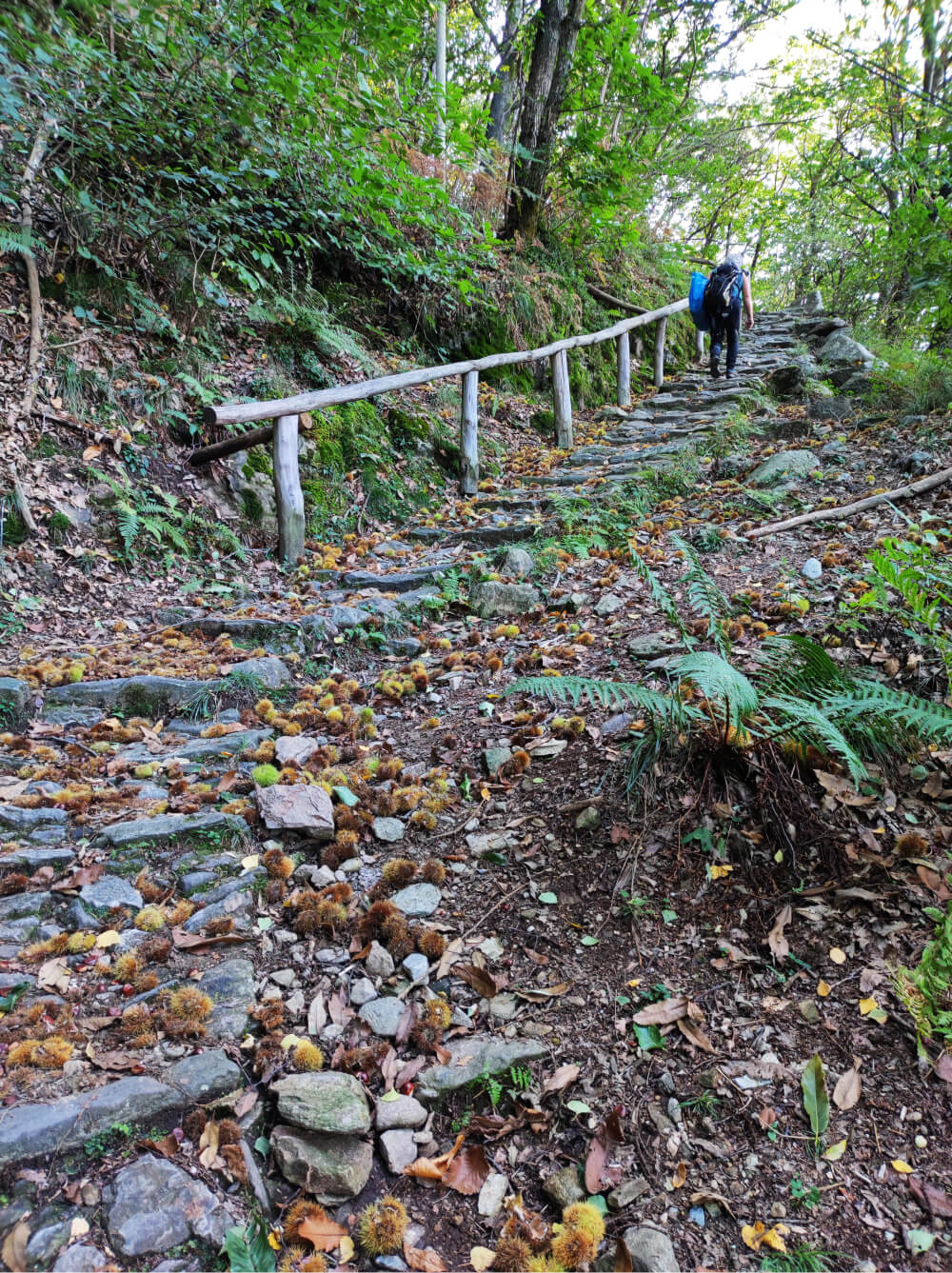
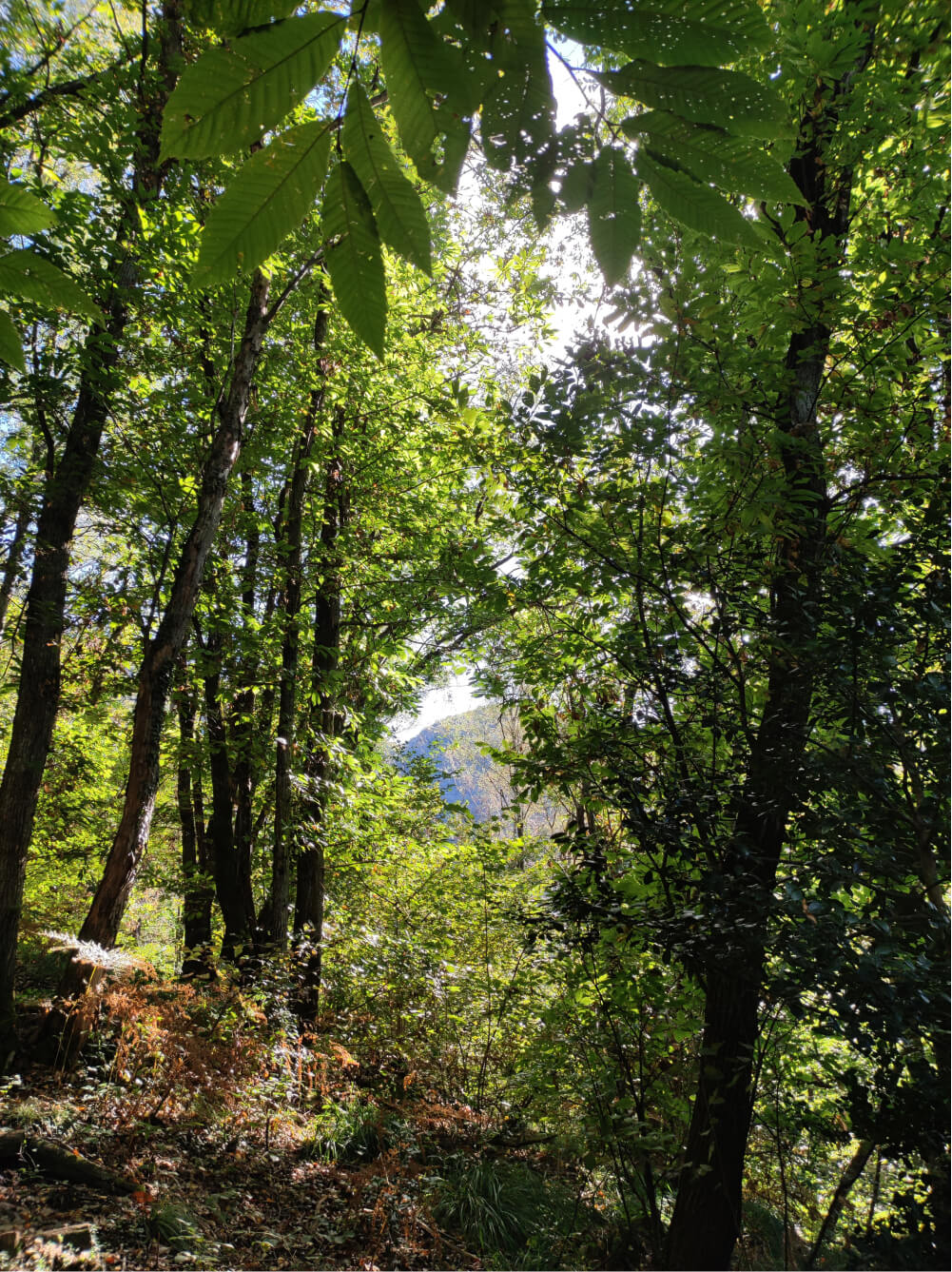
The road to the summer house on Mount Gambarogno, Lake Maggiore, Canton of Ticino, Switzerland, 2021.
TICINO
The Alps
The houses in Ticino are built mainly of stone, which is mined here. There are no roads to the summer houses on the slopes, and you have to climb along paths in the mountains. The slopes around Lake Maggiore, once cleared for pasture, are now covered again with chestnuts.
There is no electricity and gas in the summer houses, but there is running water and a view of the lake.
There is no electricity and gas in the summer houses, but there is running water and a view of the lake.
The road to the summer house on Mount Gambarogno, Lake Maggiore, Canton of Ticino, Switzerland, 2021.
Lake Maggiore, Canton of Ticino, Switzerland, 2021.
Lake Maggiore, Canton of Ticino, Switzerland, 2021.
Such houses are sometimes bought by hermit lovers — they restore them, install solar panels and live far from civilization. There are even several hotels that cannot be reached by car. Guests are invited to load their bags into the winches and walk to the reception — a 30-minute hike up the mountain.
Such houses are sometimes bought by hermit lovers — they restore them, install solar panels and live far from civilization. There are even several hotels that cannot be reached by car. Guests are invited to load their bags into the winches and walk to the reception — a 30-minute hike up the mountain.
Lake Maggiore, Canton of Ticino, Switzerland, 2021.
Sometimes massive granite stones (the most common building material in Ticino) are used unworked: in the village of Sonogno, for example, a boulder was not broken into small stones, but a house was simply built next to it.
Sometimes massive granite stones (the most common building material in Ticino) are used unworked: in the village of Sonogno, for example, a boulder was not broken into small stones, but a house was simply built next to it.
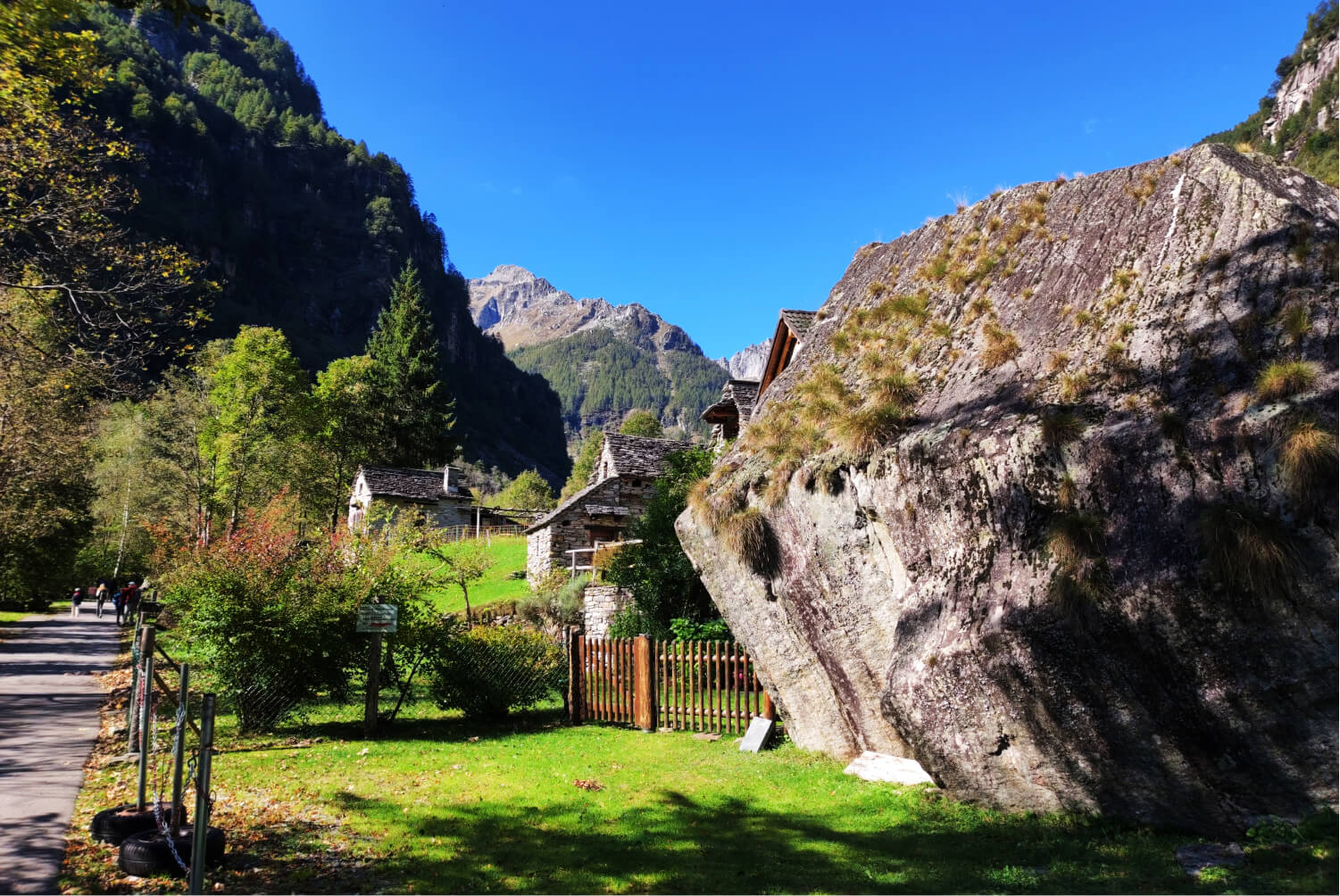
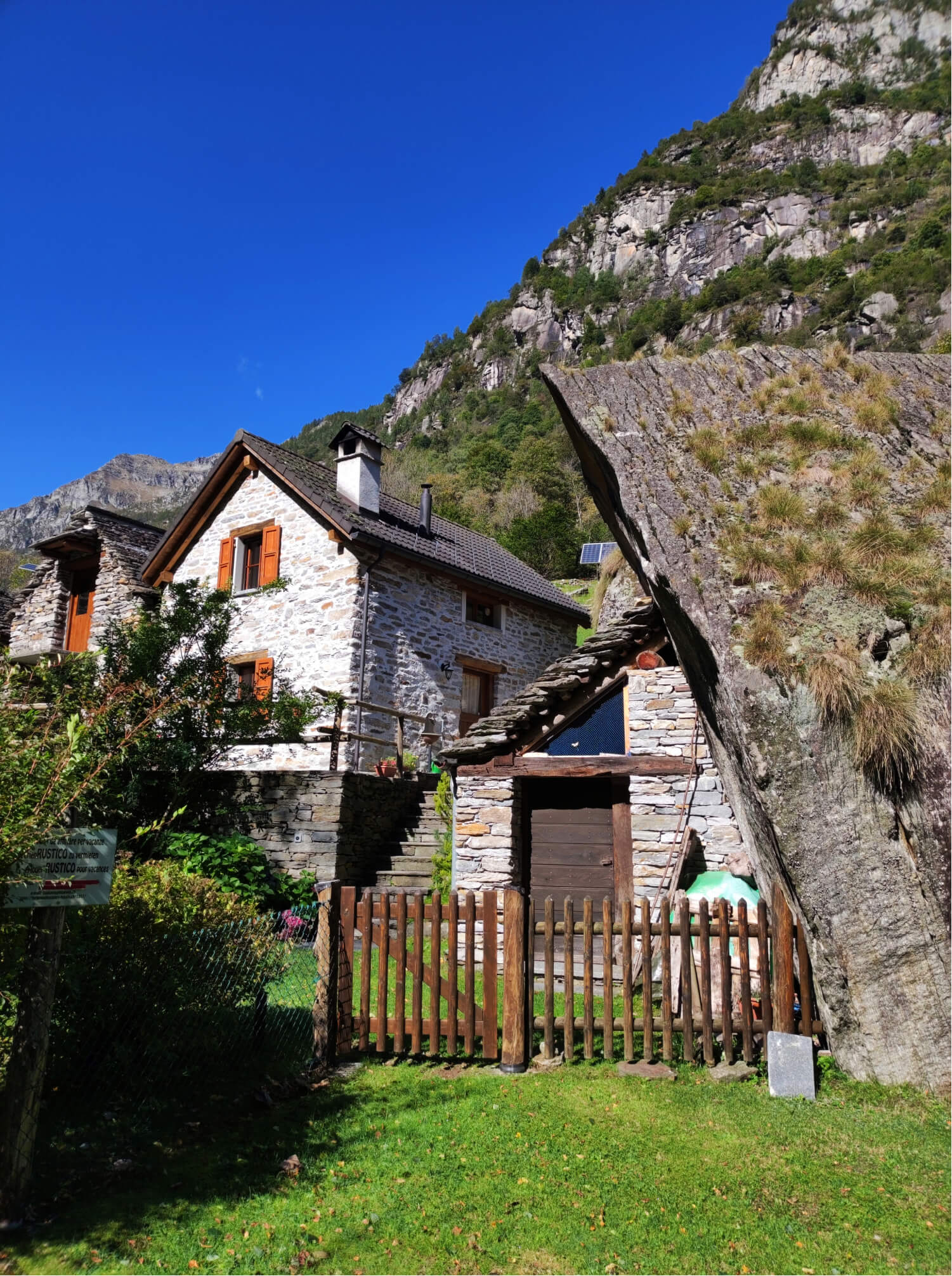
Sonogno, Canton of Ticino, Switzerland, 2021.

Sonogno, Canton of Ticino, Switzerland, 2021.
©
Anthropogeos. 2021
Contacts
Our social channels













